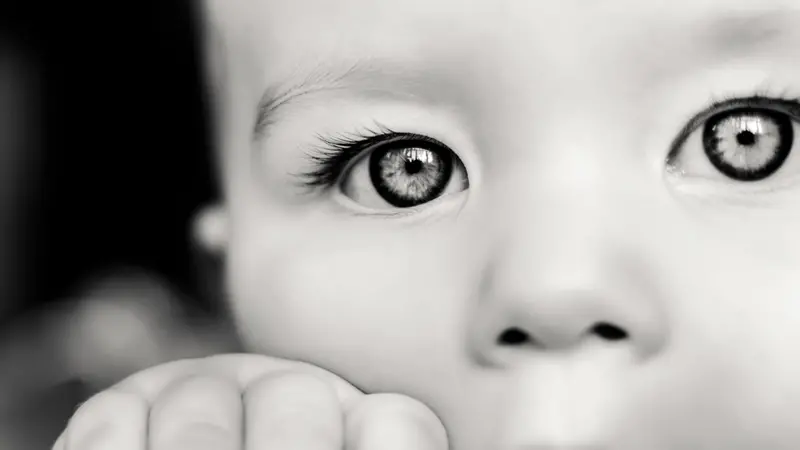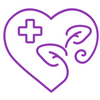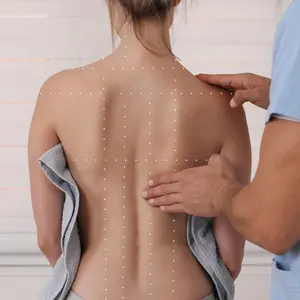

Integrative Health and Wellness

Integrative Health and Wellness
Visual Development: Birth to Age 5
A baby’s visual system is vital to its understanding of the world and social relationships. There are many things parents can do to help their child meet the critical early milestones, says integrative eye care doctor, Marc Grossman.
As a child develops, his eyes act like searchlights, probing his new world. The eyes are so important to this that even when the child is in the womb the eyes are getting ready for the world. About six months before being born, the fetus is practicing eye movements that will enable him to begin to examine his world soon after birth. This ability to actively examine the world is so connected to growth and development that, without it, normal development could actually stop.
During the first couple of weeks, it is important for the baby to establish his own body as a solid object and begin to orient in physical space. You see this in the coordination between the information he receives from his eyes and the sensations that come from his body. When you lift the baby, you will notice that his eyes and body begin to coordinate with each other. This doll-like eye movement indicates that vision and posture have begun to organize themselves in relationship to the pull of gravity on the baby's body, and the process will be well established between the second and third weeks.
The rapidly developing visual system needs stimulation in the form of varieties of light and patterns of light in order for normal growth to occur. Studies have shown that if the infant's visual system is not stimulated by light, it may stop developing.
During the third month, a baby's visual system is almost prepared to retain all the information it receives. The health of fatty tissue, called myelin, that surrounds the nerves has extended to cover those nerves that enter the cerebral cortex. The myelin sheathing helps the nerves to send their messages to the brain, but at birth this tissue covered only the baby's optic nerve and went back as far as the lower part of the brain. Now the nerves leading to the higher centers of the brain—the parts responsible for more intellectual judgments about what is being seen—begin to function. Brainwave signals that occur only when visual information is being actively studied are now detectable in the baby. During the first two months, infants do not show this brainwave pattern activity.
During the third month, a baby’s visual system is almost prepared to retain all the information it receives.
In babies up to two and half months old, the eyes are usually focused for approximately 8-10 inches. This corresponds with the distance between the mother's eyes and the baby's eyes when Mom is holding the baby in her arms. Research has shown that the baby's attention is usually focused on the mom's mouth and face up to about three months of age. At three months, which is the time the cerebral cortex starts to function, the baby starts to focus more towards the parent's eyes. This eye-to-eye contact between parent and child at this point in his development may have many consequences later in life.
Research bears out why this eye contact can have such a great impact on a baby's nervous system. When a baby is only a week old, he will respond to visual stimulation at a primitive level even if it doesn't look like he is. An object as small as a ¼ inch held eight inches away will stimulate some small eye-tracking responses. This shows that neural mechanisms are present for the baby to be influenced by something eight inches away. This eight-ten inches sets up the interplay between the parent and the child so they can bond and respond to loving smiles. When this is not present it can affect the ability to make loving eye contact as one gets older.
During his first three months, the baby's development is at the oral and passive stage. He is dependent on someone, usually the mother, for food and comfort. He learns interaction with the environment through sucking and eating. As his needs get met, he unconsciously learns to trust the environment around him; if his needs do not get met, he may develop distrust with the environment around him, leading to potential visual problems in the future.
Research bears out why eye contact can have such a great impact on a baby’s nervous system.
The first three months, therefore, set the base for being able to establish contact with the world.
At four months, the baby will have the ability to control his eye movements enough to be able to integrate them with his arms so that he can reach out into the world and interact with things as he starts to learn about the world around him. This is the start of what we call "object permanence": the ability to recognize objects for what they are and the different aspects of them—hard, soft, square, round. This is necessary for the development of language.
At this age the baby will also begin to develop eye teaming ability (binocularity), which allows him to be able to find "where" things are in space as he begins to interact with them. This binocular development allows the baby the base from which to really start to explore his environment. The ability to start to track objects begins here, which helps the baby develop a sense of space and distance of the things around them.
Because of this ability to begin to know "where" things are out in the world, the baby is beginning to develop his own personal space, which is the space that is within arm’s reach that maintains his interest and takes care of his needs. The more experience he gets in his personal space, the better able he becomes to move out into the world to areas that he does not directly control.
In the first four months of life, you can help your baby's vision develop by following these recommendations:
- Hang a mobile outside and above the crib to help provide movement and a variety of visual stimuli for her eyes.
- Remember to talk to your baby when you are in the room with him and/or when you’re feeding him or giving him things so that he can begin to associate hearing and seeing.
- Keep lots of objects she can reach and touch in the crib within eight inches so she can interact with these. Make sure they are large enough so the baby can't swallow them.
- Change the position of the crib so that light hits it from a variety of directions.
- When feeding the baby, change the position from your left to right arm so that the baby gets visually stimulated during eating from both sides.
As babies begin to crawl, at about four to eight months, they begin to focus on things as far as three feet away. With this new way to move in the world, along with eyes that allow them to be aware of things in the environment, they really begin to explore. At six months the baby can use his two eyes together so that he can grasp objects and bring them to his body. This allows the baby to be able to more easily explore different objects as he brings things into his space and puts them in his mouth and studies them. This helps the baby extend his personal space from eight inches to the end of his fingertips, which is about 10-12 inches.
To help visual development between four to six months, follow these recommendations:
- Give the baby objects of many different textures and shapes for her to interact with.
- Now hang objects as far away from her as possible for her to be stimulated by.
- Hand her objects to grasp so that she begins to develop eye-hand coordination.
At nine months, many babies are ready to explore the world from a vertical position, like standing. His hands and eyes now begin to have a partnership in which they can interact with three-dimensional space and explore how things are relative to each other. At ten months, the ability to grasp—but not release—objects is getting good. This means babies are better at engaging with things than disengaging from them. The ability to disengage accurately happens usually at 14 months. This time, between six months to a year, is when the child begins to establish himself as separate from the rest of the world and therefore begins to develop a sense of space.
Hand them objects to grasp so that they can begin to develop eye-hand coordination.
To help visual development between six and nine months, follow these recommendations:
- Let her creep and crawl around the room to explore the world. Keep her crawling; do not have her walk too soon since crawling is an important developmental skill in helping coordinate the eyes, hands, and legs.
- Play games like "peek a boo" and "patty cake."
- Have her play with other children so she can begin to imitate others and interact socially visually.
At about a year old, the ability of imagery begins as the baby can start to imitate you as you do things. Example: sticking out his tongue when you do or mimicking other facial expressions. Up to 10 feet away is now a potential area of interest, with greater attention still being up to three feet, which is the distance he will respond the most to in terms of eye contact and the ability to socialize.
Between one and one and a half years, the child is ready to begin her independence in the world, such as exploring objects, containers, putting marks on paper, the ability to place objects in different places. Example: playing with blocks and interacting with others.
At about two years old, babies have the ability to move their eyes from one object to another without moving their bodies. They don't have to move out into space to explore it but can begin evaluating it with just their eyes. They can walk up and down steps and are able to pay attention peripherally to where their bodies are going. This is the beginning of central-peripheral awareness. By two years old, personal space is well developed and they begin to integrate their language with their visual skills.
Between one and one and a half years, the child is ready to begin her independence in the world, such as exploring objects.
Their eye and hand integration has developed to the stage where they are able to do things with their hands without having to use their eyes to guide them. This is the beginning of the ability to look ahead, to be able to have imagery. In order to do things such as opening a door they are thinking visually and mentally.
The baby's eyes can now coordinate his entire body as he moves through space. The two eyes can now team together effectively out to 30 inches, beyond his arm's length. Visual memory is used to help plan his movements.
To help visual development between the ages of one and two years, follow these recommendations:
- Games such as blocks and puzzles to help improve fine motor skills and visualization ability.
- Explore the world by climbing things, riding a tricycle, being on a rocking horse; these all help with the coordination of eyes, hands, and legs.
At two and a half years old, the visual skills at arm’s length should be fully developed. The baby's eye-hand skills are at the level that he can draw things and can draw vertical and horizontal lines. He is able to focus on the qualities of things and the categories in which they belong.
In order to do things such as opening a door, they are thinking visually and mentally.
To help develop vision between two and three years old, follow these recommendations:
- Reading to her or telling a story with a picture book to help develop her ability to visualize.
- Drawing, coloring, and painting will all help her develop eye-hand coordination and how to work in a certain size visual space.
Between the ages of three and four years old, the child starts to develop the ability to coordinate the two sides of his body. This is also evident in how his eyes work together as a team. The better the two eyes team, the better the child is able to know where things are in his world. He becomes much more social at this age as his visual system can now interact better between a distance of seven and ten feet. His ability to not be situation-bound has also improved so he is using imagery and his planning-ahead skills are used more. He plays in fantasy now, which uses his visualization skills.
Focusing, which began to develop at three months so that he could establish eye contact, has improved to the level whereby he can now use it to interact with others in social situations. The three-year-old also has the ability to be able to move his eyes from one place to another without moving his body and is able to develop a plan of action when he does a task that lets him begin and complete a task. He is more interested in completing things that he starts.
As the child turns four, her ability to visualize has reached the level that she can be aware of two sides of a situation. This is the beginning of her ability to have empathy, to see what it feels like from another perspective. Her ability to integrate both sides of the body also improves at this age.
At five years old, a child’s visual acuity is at the point where she can interact visually up to 20 feet away and maintain eye contact. Now she is ready to enter a more adult-like world and go to school.
In school, besides being able to see clearly, she must be able to control her body so she can sit and pay attention to what is presented. This involves an integration between her balance mechanism and her visual attention mechanism. She needs to be able to visually monitor what is going on in the environment; to do this, she needs good eye-movement skills.
Pursuit movement, which is the ability to keep visual attention on a moving target, should be adequate by this age.
Saccadic eye movements—the ability to move the eyes from one place to another accurately—are also needed for the demands of school, and they should be adequate by this age.
The above are some of the important visual skills needed in babies and young children and when they occur. There are many ways to help develop your child's vision. Use the guidelines above and your own creativity to help your child be able to see all he or she can see.
Dr. Marc Grossman, OD, LaC, is a co-founder of NaturalEyeCare.com, which combines traditional and complementary care to protect and improve vision. He has written and co-authored many books, including Natural Eye Care: Your Guide to Healthy Eyes and Healing.
For more information, visit www.naturaleyecare.com
REFERENCES
Grossman, M. (2021, August). Natural Eye Care. www.naturaleyecare.com


 By
By


